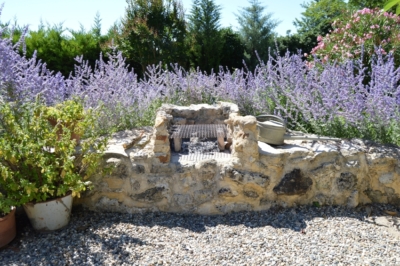Lavender is a perennial plant, which with good care and appropriate conditions may well live 20-30 years – but only if planted out in the garden. Potted lavender reaches such a high age rather rarely, although even here eight to ten years is not uncommon. As lavender ages, however, it grows larger and larger, so after a few years it may be necessary to transplant it from its original location. In turn, lavender kept exclusively in pots, you should regularly transplant to a larger pot.

Move lavender before budding if possible
Garden lavender that has grown too large or plants that you simply want (or need) to move to another location should be dug up and moved in the spring, if possible. It is important that no frosts – especially no night frosts! – are to be expected, so that the roots can take root again without damaging disturbances. If, on the other hand, you want to transplant the lavender later, for example because the spring was cold and wet, the last possible time to do this is in July or at the latest in early August. The roots need sufficient time before the winter break to grow firmly into the new soil.
Transplant lavender
It is not easy to transplant lavender without damage, because the plant develops not only a widely branched root network, but also very deep taproots. If the roots are damaged too much, the plant can die in the worst case. In most cases, however, it will recover after one to two years at the latest, provided you have dug up the root ball as large as possible. And this is how you proceed when moving the plant:
- First dig a sufficiently large and deep hole at the new location.
- This should be about a third wider than the plant and twice as deep.
- If necessary, you need to mix suitable substrate and provide drainage.
- The plant should not yet be pruned before digging.
- Now dig up the plant to be moved.
- Start outside the leaf crown and as deep as possible.
- Try to damage as few roots as possible.
- After digging up the plant, carefully remove the soil and inspect the roots for damage.
- Make a root pruning cut if necessary, keeping the cut edge as angled as possible.
- Place the plant with the root ball in the new planting hole and fill this with soil.
- Press the soil down well.
- Water thoroughly.
- Now you can prune the lavender as usual.
Repot potted lavender regularly
Unlike garden lavender, when you replant potted lavender into a larger pot is relatively unimportant. The only important thing is that this is not done during winter dormancy, but either in spring or summer. The new pot should always be at least a third larger than the old one – the lavender’s widely branching roots require a lot of space.
Tips & tricks
Pots made of clay or terracotta are particularly suitable for potted lavender, because excess moisture evaporates better from them than from plastic pots, for example. Plastic is particularly susceptible to the formation of waterlogging and is therefore not very suitable for lavender.

